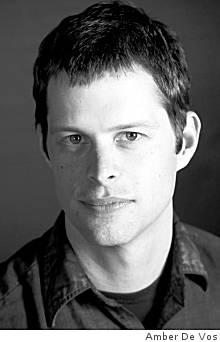John Wray is most recently the author of Lowboy.

Listen: Play in new window | Download (Running Time: 34:14 — 31.3MB)
Condition of Mr. Segundo: Searching for those who will listen to him in the subway.
Author: John Wray
Subjects Discussed: The ABAB narrative of Lowboy, mirroring schizophrenia within a narrative structure, a sane perspective that assists the reader, subway details, Franz Kafka’s Amerika, real vs. imaginary details, Jonathan Zizmor, the C#/A subway tone, the origin of the character name Heller, Ulysses, resisting eccentric character names, merging two words into one unhyphenated word, A Portrait of the Artist as a Young Man, ideal seating positions in a subway, appealing to a wider audience, balancing the uncompromising literary voice with suspense, comparing the research in Wray’s three books, the difficulties of convincing the reader, Daniel Paul Schreber’s Memoirs of My Nervous Illness, sexual preoccupation and schizophrenia, an intimate third-person voice, the relationship (or lack thereof) between Freud and Schreber, pat summations, urban exploration, the benefits of imagination, the Sikh religion and the end of the Seventh Avenue Line, open interpretations and false connections, respect for the subconscious, the old City Hall station, the dangers of being subsumed by research, writing vs. thinking, graphical segues in prose, B.S. Johnson’s holes, and John Wray vs. John Henderson.
EXCERPT FROM SHOW:
Correspondent: You have Emily and Lowboy entering at the 14th Street station. I’m going to get subway geeky with you here.
Wray: Okay.
Correspondent: I should point out that when you get into Union Square, there is — or there is now and there won’t be very soon — a Virgin Megastore.
Wray: Right.
Correspondent: Was that particular location a deliberate choice on your part?
Wray: (laughs) You know, sometimes there are just these happy accidents that come about either completely by chance or through some sort of action of the subconscious. I’m not really sure. The German editor of Lowboy was very proud of himself for the game of interpretation that he played, which involved a lot of reversals and mirror image analyses, that I guess you could say. He was very proud of himself for having been the only person to discover that the name of the detective in the novel, Ali Lateef..
Correspondent: Either the jazz artist or even the hip-hop artist in Oakland.
Wray: Well, there’s that. Yeah, that was a conscious reference on my part. But this German editor of mine was very proud to have figured out that Lateef spelled backwards is “fetal.”
Correspondent: Yes.
Wray: Which is something that I never thought of. In a million years, I wouldn’t have thought of that. And I still don’t know what he was getting at. But who knows? I mean, it’s quite possible that these things percolate up from the subconscious in some way.
Correspondent: But I also must point out that the 86th Street Station does not have a line that you can see across, as you point out in this particular book. This led me then to believe as I was reading it, “Oh! Is this really real or not?” It was a kind of clue. Deliberate choice on your part?
Wray: Well, I deliberately — I’ve always been a big fan of Franz Kafka’s novel, Amerika. Particularly of the way that Amerika begins. Amerika, of course, being a novel written by someone who had never been to America and who was making deliberate use of the myth of America as a way of addressing many other things. Kafka was not particularly interested in the United States. And in the beginning of the novel Amerika, this boat filled with immigrants enters New York Harbor. And one of the very first sentences describes the Statue of Liberty holding aloft its wonderful gleaming sword.
Correspondent: Yeah.
Wray: Rather than the torch, of course. So in an earlier version of Lowboy, in a bit of a tip of the hat to that novel, I introduced various, fairly overt features into this New York City that would differentiate it from the New York of realistic fiction. Then as the novel evolved, it became more and more naturalistic in a way, and eventually settled into this mode of heightened realism that it now occupies. But there are still certain little vestiges of that earlier alternative New York.
Correspondent: And this would be one of them.
Wray: I think you’ve caught one of them. Yeah.
Listen: Play in new window | Download (Running Time: 34:14 — 31.3MB)
1 Comment